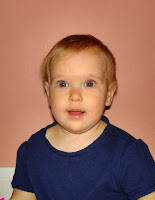
One Friday in 2007, Maria and Remo Pezzente were spending a quiet evening sorting through some photos of their children that they’d taken earlier. They were looking for good shots for the family album, and maybe some to send to grandparents.
As they flicked through the images they noticed, with a touch of annoyance, that they hadn’t been careful enough with the camera settings. They'd forgotten to switch to the 'red-eye reduction' mode and their kids were showing the annoying, devilish red glow in their eyes (see ‘What is red-eye?’ to the right).
But then they noticed something odd. Whilst their other children had this effect in both eyes, 4-month old baby Leo was different. His right eye was glowing red, his left came out milky white.
They examined him and, although they couldn’t see anything wrong, it was still slightly worrying.
So they did a quick search on the internet and found that this ‘white eye’ effect was called leukocoria. A further search on the word leukocoria brought up the possibility of a retinoblastoma – cancer of the eye.
Now they were really worried. The next morning they decided that this was too important to wait until Monday. They took baby Leo to hospital where he was examined by a paediatrician.
The paediatrician agreed that the photo was odd but, after examining Leo’s eye, couldn’t find anything amiss either. He suggested that perhaps something was wrong with the red-eye reduction feature on the camera. Nevertheless, he felt that it was worth getting a second opinion from an ophthalmologist.
To their shock, the ophthalmologist diagnosed a large malignant tumour in Leo's left eye. Retinoblastoma.
And by Monday morning, Leo had been checked in to the hospital for surgery.
The treatment was successful – the cancer had been caught in time. But that was not the end of Leo’s story. A short while later he lost his vision completely as a malignant brain tumour was found pressing on his optic nerve.
As a result of this Leo had to endure many cycles of chemotherapy. He even had a bone marrow transplant in the week after his first birthday.
But, through their vigilance, Maria and Remo had caught the problem early. The treatments that Leo had to undergo were successful. The tumour shrank away from his optic nerve, Leo regained his vision and is now a happy, energetic boy who is fast approaching his third birthday. (In the centre of this photo.)
And all this because Maria and Remo spotted something unusual in a family photograph.
So, be aware. If you are taking photographs of a child and one or both eyes come out abnormally white, it is worth a medical check-up. White-eye doesn’t necessarily mean a problem. But it could ... and it could be life-threatening.
Check it out. Your camera can save a child’s life.













